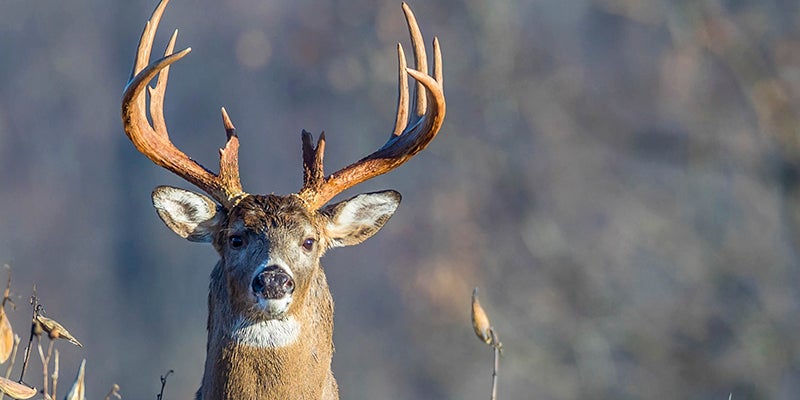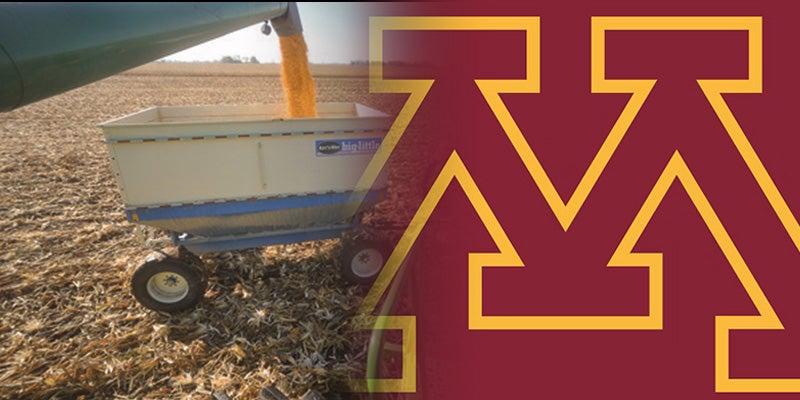Minnesota farmers want help fending off voracious deer
Published 8:40 am Monday, December 11, 2023
|
Getting your Trinity Audio player ready...
|
The hay and grain storage piles on the Rickford farm near Barnesville are visible from the house windows. Last winter, the view was a constant reminder to Jennifer Rickford that her cattle feed supply was disappearing far too fast.
“Every time I looked out the window last winter, I seen those damn deer in my feed pile,” she said. “It raises your blood pressure every single time.”
Sometimes Rickford or her husband would hop on an ATV and chase 80 to 100 deer away from the feed.
“It’ll make you feel better for just a little bit, until you see them turn around and come right back in,” she said.
Rickford estimates the deer eat several hundred pounds of feed a day, but she hesitates to put a dollar figure on the loss.
“How much of it do they ruin? You can’t really measure it because it’s all the stuff they stand on and crap on and pee on. You can’t really clean up what they do,” she said.
The Minnesota State Cattlemen’s Association reports similar complaints from across the state.
Association president Jake Thompson visits local chapters each year.
“That was probably the number one topic, it didn’t matter if you’re up in Karlstad, Minnesota, or if you were all the way down south of Pipestone, Minnesota. Same type of thing was kind of being talked about,” he said.
Some farmers reported tens of thousands of dollars of damage to stored feed last winter.
This is not a new problem. During hard winters, deer often turn to easily accessible feed stored on farms. But Thompson said he’s been hearing much more about the issue in the past few years.
His greatest fear is the potential for disease to spread from having large herds of deer in contact with cattle for several months.
“When it’s condensed numbers like that, and a heavy density of deer in one spot — especially around feed that’s being fed to animals — it is a major concern,” said Thompson.
Deer can spread diseases to cattle, including bovine tuberculosis and some viruses.
There’s currently no evidence deer can spread chronic wasting disease to cattle.
Some farmers store feed in large plastic tubes on the ground, only to have deer tear the plastic open and eat the feed.
‘We’re paying attention’
Jennifer Rickford would like to put a fence around her stored feed, but the size of the storage area makes a deer-proof fence cost prohibitive.
“What doesn’t make sense to me is these are the state’s deer. If my cows are on somebody else’s ground and eating their crops, I’m responsible for that,” she said. “But these are the state’s deer and they’re coming in and doing damage, but it’s not (the state’s) problem.”
“It’s something that we’re paying attention to,” said Leslie McInenly, DNR wildlife populations and regulations manager.
From July 2022 to July 2023, the DNR received 280 deer damage claims. Claims averaged 233 per year over the past five years. The DNR’s goal is fewer than 150 damage claims a year.
Ag groups say many more farmers don’t contact the DNR about damages.
DNR staff have been meeting with ag groups and discussing possible regulatory or statutory changes.
“We actually are looking at some potential policy initiatives that we can work on with the producers that might better address this situation,” said McInenly. “It is something that we’re looking at this year in particular.”
The DNR has a program to help farmers like Jennifer Rickford pay for fencing to keep deer out of their feed. Rickford applied several years ago but said she has not heard from the agency.
McInenly acknowledged a backlog as a result of staffing shortages in the past few years, but said the agency is now catching up. She said the program is also underfunded with only about $150,000 to spread across the state each year.
The complaints aren’t only from farms with cattle. The Minnesota Soybean Growers Association is also pushing for more state help.
Board member Brad Hovel farms near Cannon Falls and has experienced large herds of deer eating tender young crops in the spring, significantly reducing the crop yield at harvest.
“It’s really disheartening that the wildlife is absolutely destroying the hard work that we put into producing and growing our crops,” he said.
“We had a 26-acre field where the combine, with the yield monitor in the combine, only recorded 12 acres of harvestable product,” he said.
McInenly says it would be very difficult for the state to compensate farmers for all wildlife losses.
“There’s always going to be a background level of human and wildlife conflict where there’s land uses that are in conflict, especially in the agricultural part of the state,” she said.
Changing hunter behavior
But McInenly said changes in hunting patterns seem to be making the deer problem worse for farmers than it’s been in the past.
“Hunters are increasingly focusing on harvesting bucks rather than does, which has implications for our population management,” she said.
“You can put very heavy pressure on bucks in the population and not impact population growth. If you want to reduce the deer population, you really need to be taking out a higher proportion of antlerless deer than we have been,” said McInenly.
That might mean regulatory changes that would provide incentives for hunters to kill more female deer. But McInenly says the regulations need to be tailored to the way land is used in different parts of the state and to regional differences in the deer population.
She expects the agency will bring some potential solutions to state lawmakers when they convene early next year.





